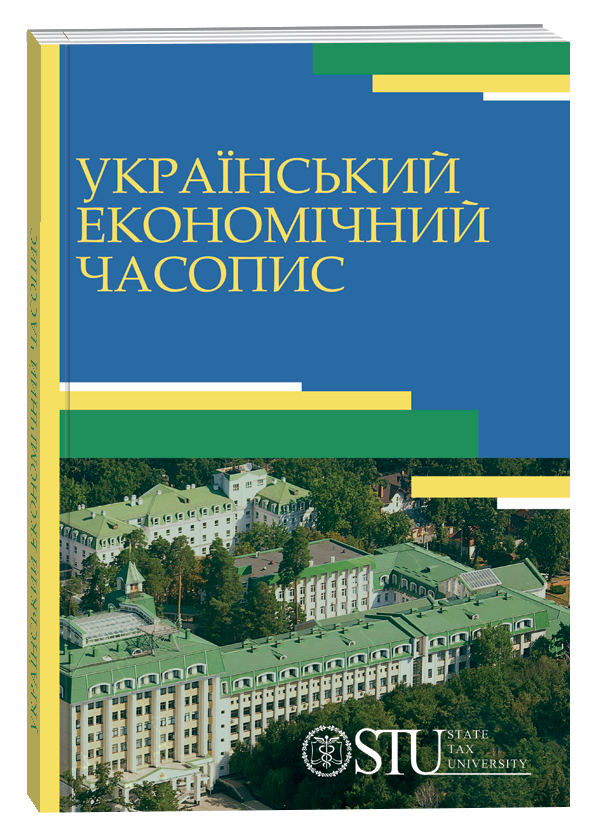COMPARATIVE ANALYSIS OF THE METHODOLOGICAL AND CATEGORICAL APPARATUS OF PROJECT MANAGEMENT
DOI:
https://doi.org/10.32782/2786-8273/2024-5-18Keywords:
project management, project, project life cycle, CPM/PERT, WBS, CPA, ISO, PMBoKAbstract
Introduction. Project management is a critical discipline essential for the successful execution and completion of projects across various industries. This paper explores the fundamental methodological apparatus like project and project management. The concepts and methodologies of project management, emphasizing the project life cycle, which encompasses initiation, planning, execution, monitoring, and closure phases. The application of techniques such as Critical Path Method (CPM) and Program Evaluation and Review Technique (PERT) is examined, illustrating their importance in optimizing project timelines and resources. Work Breakdown Structure (WBS) is highlighted as a vital tool for decomposing projects into manageable sections, facilitating better control and allocation of tasks. Critical Path Analysis (CPA) is discussed in the context of identifying the longest path of dependent activities, ensuring timely project delivery. The integration of international standards, particularly those from the International Organization for Standardization (ISO), and the guidelines from the Project Management Body of Knowledge (PMBoK), provide a structured approach to project management, enhancing consistency and quality. The various project functions, including scope management, time management, cost management, quality management, and risk management, are detailed to underscore their collective impact on project success. The significance of project management is underscored by its ability to align projects with organizational goals, manage risks, ensure resource optimization, and deliver expected outcomes efficiently. By delving into these core aspects, the paper aims to provide a comprehensive understanding of why project management is pivotal in today’s dynamic and complex business environment. This study underscores the strategic importance of adopting robust project management practices and tools to achieve competitive advantage and drive organizational success. Methods. During this study was analyzed a lot of theoretical information and used the following methods like, comparison method, abstraction method, analysis and synthesis. Based on the analyzed categorical and conceptual apparatus of the main terms "project" and "project management" and the different approaches to forming these concepts, it can be concluded that there are currently many opinions and contradictions in the main terminological definitions. These inconsistencies persist despite project management elements being used since ancient times. The author attributes these problems to the lack of a stable theoretical and methodological base and the need to rapidly adapt processes and theories. This situation creates a certain chaos and leads to difficulties in establishing stable and universally recognized definitions of the conceptual and categorical apparatus of the discipline of project management. The purpose of the article was to analyze and formulate the concept of project and project management and to provide information about the positive aspects of implementing this type of organizational management. The results of this analysis reveal that a more consistent and stable theoretical and methodological foundation is required for the discipline of project management. Standardized definitions and approaches are necessary to reduce chaos and improve the efficacy of project execution and management. The study highlights the strategic importance of adopting robust project management practices and tools to achieve competitive advantage and drive organizational success. The conclusions suggest that with a stable theoretical base and standardized methodologies, the discipline of project management can significantly enhance organizational performance by aligning projects with organizational goals, managing risks, optimizing resources, and delivering expected outcomes efficiently.
References
Зотов О.В. Проект, управління проектом: основні поняття, суб’єкти державного управління. Державне управ¬ління: удосконалення та розвиток. 2010. URL: http://www.dy.nayka.com.ua/?op=1&z=171 (дата звернення: 10.04.2024).
Москвін С.О., Бевз С.М., Дідик В.Г., Верба В.А. та ін. Проектний аналіз. Київ : Видавництво «Лібра». 1998. С. 368.
Ричкіна Л.В. Тенденції та перспективи застосування проектного менеджменту для розвитку територіальних громад. Ефективність державного управління. 2015. Вип. 44(1). С. 178–184. URL: http://nbuv.gov.ua/UJRN/efdu_2015_44(1)__24 (дата звернення: 10.04.2024).
Тян Р.Б., Холод Б.І., Ткаченко В.А. Управління проєктами. Київ : Центр навчальної літератури. 2003. C. 224
Андрейченко А.В., Горбаченко С.А., Дикий О.В. Особливості управління проєктами у сфері кібербезпеки. Кібер-безпека: освіта, наука, техніка. 2020. № 2. С. 45–51. DOI: https://doi.org/10.28925/2663-4023.2020.10.4553
Воронкова В.Г., Романенко Т.П., Андрюкайтене Р. Концепція розвитку проєктно-орієнтованого бізнесу в умо¬вах цифрової трансформації до SMART-суспільства. Гуманітарний вісник Запорізької державної інженерної академії. 2016. Вип. 67. C. 13–7.
Макух Я. Д. Термінологічні рівні поняття «проєкт». Глобалізація та управління проєктами у ХХІ столітті: мате-ріали наук.-практ. rонф. Львів. 2003. С. 35–37.
Jessica Mudditt, Adam Hardy, What Is Project Management? Forbes, June 15, 2023. URL: https://www.forbes.com/advisor/au/business/what-is-project-management/ (дата звернення: 05.03.2024).
Dobie, Colin, A handbook of Project Management, Allen & Unwin, 2007, p. 92 Ibid, p. 10.
IPMA. International Project Management Association. URL: https://www.ipma.world (дата звернення: 10.04.2024).
Australian Institute for Project management, National Competence Standard for Project management – Guidelines 1996, p. 162.
A Guide to the Project management Body Knowledge. Project Management Institute Standards Committee. 7 Edition., 2021, p. 370.
Wilson, J.M. Gantt charts: A centenary appreciation. European Journal of Operational Research. 2003. No. 149(2). Pp. 430–437. DOI: https://doi.org/10.1016/S0377-2217(02)00769-5
Marsh, Edward R. (June 1975). The Harmonogram of Karol Adamiecki. The Academy of Management Journal (The Academy of Management Journal. Vol. 18. No. 2.18 (2). Pp. 358–364. DOI: https://doi.org/10.2307/255537.JSTOR 255537
Fayol, Henri (1949). General and Industrial Management. London: Sir Isaac Pitman & Sons.
Taylor, Frederick Winslow; Thompson, Sanford Eleazer (1912). Concrete Costs (1st ed.; 1st issue). John Wiley & Sons – via Internet Archive (University of Wisconsin – Madison)
Brennan, Maribeth; PERT and CPM: a selected bibliography, Council of Planning Librarians, Monticello (IL), 1968, p. 1.
Caroline Mondon, The Missing Links: A Demand Driven Supply Chain Detective Novel, Industrial Press, Incorporated, 2016, p. 320.
Chiu, Y. C.. An Introduction to the History of Project Management: From the Earliest Times to A.D. 1900. Netherlands: Eburon, 2010. P. 245.
Chiu, Y. C.. A History of Ancient Project Management: From Mesopotamia to the Roman Empire. Netherlands: Eburon, 2011. p. 234. British Standard BS 6079:2019 "Project management. Principles and guidance for the management of projects". URL: https://www.en-standard.eu/bs-6079-2019-project-management-principles-and-guidance-for-the-management-of-projects/?gad_source=1&gclid=CjwKCAiAxaCvBhBaEiwAvsLmWHs6o3T8nt4JRpNP2LYFomzJ6cRVDFMF6BIpKvpqKn6u4D1lm4s9pRoCkxIQAvD_BwE (дата звернення: 10.04.2024).
ISO 21500:2021 "Project, programme and portfolio management". URL: https://www.iso.org/standard/75704.html (дата звер¬нення: 10.04.2024).
Axelos certified training center for PRINCE2/ITIL. URL: https://www.axelos.com/certifications/prince2/what-is-project-management (дата звернення: 10.04.2024).
PRINCE2 7th Edition Foundation and Practitioner exams. URL: https://www.prince2.com/eur/blog/project-vs-programme (дата звернення: 10.04.2024).
Turner, J. R. (2009). The handbook of project based management (3nd ed.). London: McGraw-Hill. P. 473.
Zotov, O.V., (2010) Proekt, upravlinnia proektom: osnovni poniattia, subiekty derzhavnoho upravlinnia. [Project, project management: basic concepts, subjects of public administration] Derzhavne upravlinnia: udoskonalennia ta rozvytok. URL: http://www.dy.nayka.com.ua/?op=1&z=171 (accessed May 10, 2024).
Moskvin, S.O., Bevz, S.M., Didyk, V.H., Verba, V.A. ta in., (1998) Proektnyi analiz. [Project Analize] Kyiv: Vydavnytstvo «Libra», p. 368.
Rychkina L.V. (2015) Tendentsii ta perspektyvy zastosuvannia proektnoho menedzhmentu dlia rozvytku terytorialnykh hromad [Trends and prospects of the application of project management for the development of territorial communities]. Efektyvnist derzhavnoho upravlinnia, vol. 44(1), pp. 178–184. URL: http://nbuv.gov.ua/UJRN/efdu_2015_44(1)__24 (accessed May 10, 2024).
Tian, R.B., Kholod, B.Y. i Tkachenko, V.A. (2003). Upravlinnya proectamy. [Project management]. Kyiv: Tsentr navchalnoi literatury, p. 224
Andreichenko A.V., Horbachenko S.A., Dykyi O.V. (2020) Osoblyvosti upravlinnia proiektamy u sferi kiberbezpeky [Peculiarities of project management in cyber defense]. Kiberbezpeka: osvita, nauka, tekhnika, no. 2, pp. 45–51. DOI: https://doi.org/10.28925/2663-4023.2020.10.4553
Voronkova V. H., Romanenko T. P., Andriukaitene R. (2016) Kontseptsiia rozvytku proiektno-oriientovanoho biznesu v umovakh tsyfrovoi transformatsii do SMART-suspilstva [The concept of project-oriented business development in conditions of digital transformation to a SMART society]. Humanitarnyi visnyk Zaporizkoi derzhavnoi inzhenernoi akademii, vol. 67, pp. 13–27.
Makukh Ya. D. Terminolohichni rivni poniattia «proiekt» [Terminological levels of the concept of "project"] (2003) Hlobalizatsiia ta upravlinnia proiektamy u KhKhI stolitti: materialy nauk.-prakt. konf. Lviv, pp. 35–37.
Jessica Mudditt, Adam Hardy, What Is Project Management? Forbes, June 15, 2023. URL: https://www.forbes.com/advisor/au/business/what-is-project-management/ (accessed May 10, 2024)
Dobie, Colin, A handbook of Project Management, Allen & Unwin, 2007, p. 92 Ibid, p. 10.
IPMA. International Project Management Association. URL: https://www.ipma.world/. (accessed May 10, 2024).
Australian Institute for Project management, National Competence Standard for Project management – Guidelines 1996, p. 162.
A Guide to the Project management Body Knowledge. Project Management Institute Standards Committee. 7 Edition., 2021, p. 370.
Wilson, J. M. (2003) Gantt charts: A centenary appreciation. European Journal of Operational Research, no. 149(2), pp. 430–437.DOI: https://doi.org/10.1016/S0377-2217(02)00769-5
Marsh, Edward R. (June 1975). The Harmonogram of Karol Adamiecki. The Academy of Management Journal, vol. 18, no. 2.18 (2), pp. 358–364. DOI: https://doi.org/10.2307/255537.JSTOR 255537
Fayol, Henri (1949). General and Industrial Management. London: Sir Isaac Pitman & Sons.
Taylor, Frederick Winslow; Thompson, Sanford Eleazer (1912). Concrete Costs (1st ed.; 1st issue). John Wiley & Sons – via Internet Archive (University of Wisconsin – Madison)
Brennan, Maribeth; PERT and CPM: a selected bibliography, Council of Planning Librarians, Monticello (IL), 1968, p. 1.
Caroline Mondon (2016) The Missing Links: A Demand Driven Supply Chain Detective Novel, Industrial Press, Incorporated, p. 320.
Chiu, Y. C. (2010) An Introduction to the History of Project Management: From the Earliest Times to A.D. 1900. Netherlands: Eburon, p. 245.
Chiu, Y. C. (2011) A History of Ancient Project Management: From Mesopotamia to the Roman Empire. Netherlands: Eburon, p. 234.
British Standard BS 6079:2019 "Project management. Principles and guidance for the management of projects". URL: https://www.en-standard.eu/bs-6079-2019-project-management-principles-and-guidance-for-the-management-of-projects/?gad_source=1&gclid=CjwKCAiAxaCvBhBaEiwAvsLmWHs6o3T8nt4JRpNP2LYFomzJ6cRVDFMF6BIpKvpqKn6u4D1lm4s9pRoCkxIQAvD_BwE (accessed May 10, 2024).
ISO 21500:2021 "Project, programme and portfolio management". URL: https://www.iso.org/standard/75704.html (accessed May 10, 2024).
Axelos certified training center for PRINCE2/ITIL. URL: https://www.axelos.com/certifications/prince2/what-is-project-management (accessed May 10, 2024).
PRINCE2 7th Edition Foundation and Practitioner exams. URL: https://www.prince2.com/eur/blog/project-vs-programme (accessed May 10, 2024).
Turner, J. R. (2009). The handbook of project based management (3nd ed.). London: McGraw-Hill, p. 473.



